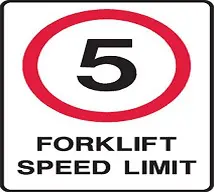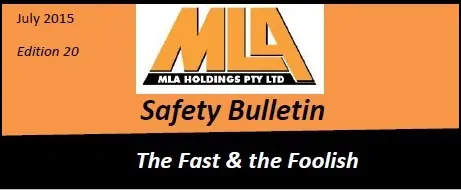

We’ve all seen the carnage and devastation that speeding causes on our roads. Speeding is not limited to road vehicles and open highways, unfortunately it’s prominent at the workplace and on many occasions it involves forklifts. A forklift is an extremely dangerous piece of equipment, and negligent operation can be deadly.
A tipping forklift is one of the most common causes of forklift related deaths and injury. A forklift tips when its stability is compromised, and speed is a regular cause of forklift instability. Operating a forklift at a speed that’s needlessly fast or above the workplace limit can also cause the forklift to become uncontrollable, make it difficult to spot hazards, and enhance the probability of collisions. By speeding, the operator is unnecessarily putting themselves, other operators, and all nearby pedestrians in grave danger.
Managers and supervisors must impose strict guidelines for forklift safety, including speeding. There are numerous ways to achieve effective speed control in the workplace:
Speed limiting devices are an effective way of controlling speed. They allow you to dictate the speed of the forklift depending on the environmental conditions, weight and height of the load, and the turning radius of the forklift. A speed limiting device is a standard feature on Mitsubishi forklifts. Furthermore, MLA technicians can set a certain speed on the forklift that operators will not be able to tamper with, thus taking away the opportunity to go faster than the established limit.
Just as it is with cars on the road, speeding with a forklift at the workplace is nothing short of foolish, needlessly compromising the safety of many.
Information for this article was sourced from SafeWork Australia & WorkSafe VIC.








